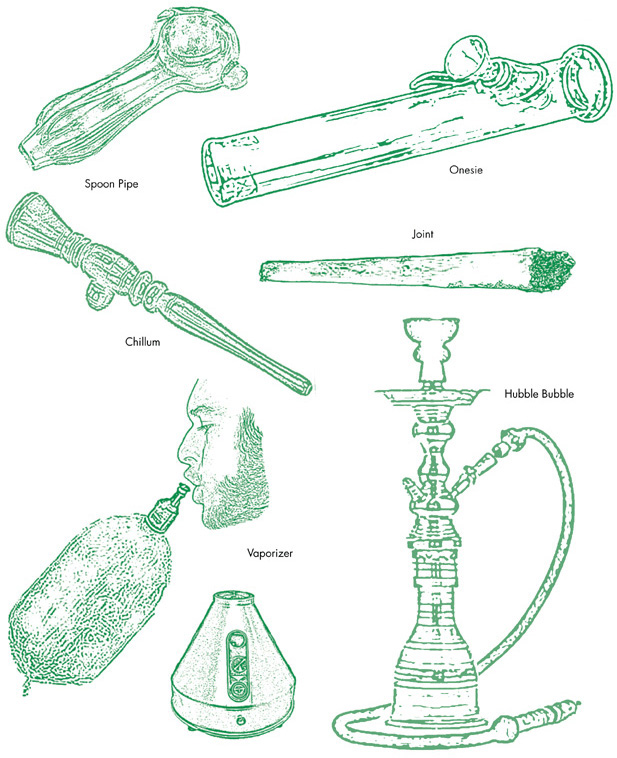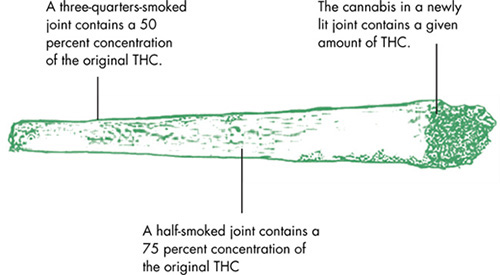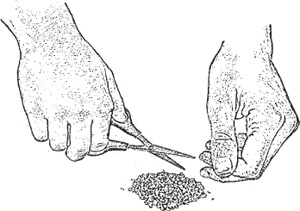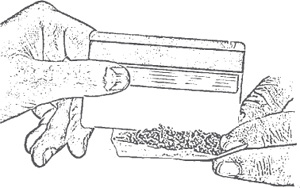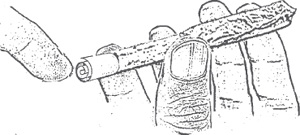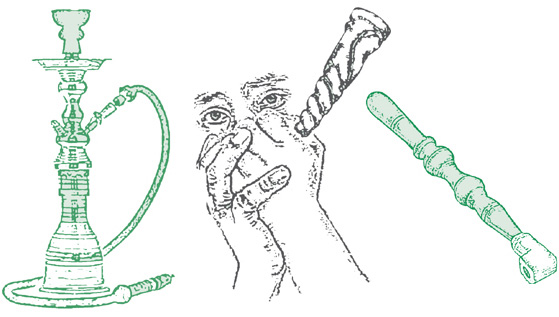From the clay chillum pipes of Goa, India, to miniature electronic vaporizers, there are hundreds of choices for delivering cannabis into the body. The most appropriate medical approach is the one that provides the most precise dose, for the desired duration, in the appropriate form, with the fewest side effects. That is quite a range of challenges, which cannot be addressed easily. Each delivery method has its own advantages and drawbacks. For example, smoking delivers a very wide range of cannabis constituents to the bloodstream within seconds. Delivering a precise dose is easy for most patients to learn, but the principal drawback is that combustion produces toxins, and those toxins can injure delicate lung tissue. Vaporizing and e-pens are recent approaches to delivering cannabis medicines, and avoid some of the issues of smoking by keeping the temperature of cannabis below the level at which it combusts. Vaporization converts the medicine into an inhalable vapor. Most patients who use vaporizers, however, don’t understand that the different active ingredients in cannabis boil at different times during the process. The method is only truly effective if the patient can learn how the process works. Eating cannabis medicines predates smoking and vaporizing by thousands of years. Oral cannabis medicines deliver their effects for twice as long as their smoked or vaporized counterparts. Because ingested cannabis is transformed in the liver, oral cannabis medicines take longer to take effect, and the duration of those effects varies widely between individuals. Smoking is the most common method of delivering a dose of herbal cannabis. Smoking cannabis causes rapid elevation of THC levels in the bloodstream, which are measurable within five seconds of inhalation. Peak blood levels of cannabinoids are achieved within five to 10 minutes. Because of the rapid rate of delivery, patients can easily and quickly learn to control dose by smoking cannabis. Patients can learn to control their smoked dose by simply titrating the dose one inhalation at a time, then waiting a few minutes between each inhalation. Smoking cannabis is the process of heating cannabis to combustion temperatures, then inhaling the solid and liquid particulates and gases that are created in the combustion process. While unheated cannabis contains over 700 different compounds, when cannabis is smoked those raw compounds are converted into the thousands of combustion compounds contained in cannabis smoke. While it may seem that the practice of cannabis smoking is ancient, it is likely a relatively recent practice, going back to the fifteenth-century European discovery and exploration of the New World (viz the Americas). Robert Clarke and Mark Merlin believe that smoking was introduced to Europe after Columbus’s transatlantic voyage in 1492. The local Taino people of Cuba introduced Columbus’s sailors to tobacco smoking. Cigars in Central America had been smoked since at least the ninth century CE. Some of Columbus’s crew became addicted to tobacco and brought their habit back to the Old World. Tobacco smoking became a craze during the half century following Columbus’s return. At first, smoking was such an unusual sight it was described as “fog drinking.” Cannabis smoking is believed to have become popular only after the introduction of tobacco smoking. While some researchers claim that there is archaeological evidence in Ethiopia for cannabis smoking in the thirteenth century (in the form of pipes containing cannabis residue), this claim remains disputed. By the mid-fifteenth century, cannabis resin (in the form of hashish) was being smoked in the Middle East, often mixed with tobacco, though occasionally not. Smoking cannabis will begin to decline in popularity as vaporization technology becomes more portable and efficient and its cost declines. A Controversial Form of Delivery The practice of smoking medicinal cannabis remains controversial because smoke contains noxious substances, some of which are linked to pulmonary disease and cancer in tobacco users. According to University of Mississippi research, cannabis smoke contains 1,500 different chemicals, including some known carcinogens. However research at UCLA, led by Donald Tashkin, found that long-term chronic smokers of cannabis did not have increased incidence of head, neck, or lung cancers. In this study, with no concomitant tobacco use, cannabis smokers had a lower incidence of these cancers than nonsmokers. A more recent population study among chronic cannabis smokers appears to show a higher incidence of one type of lung cancer among those that deeply inhale and hold cannabis smoke into their lungs. And while smoking cannabis appears to be linked to the tissue changes associated with emphysema, it does not appear to lead to the development of the disease. Preparing Cannabis for Smoking Cannabis should be chopped carefully for smoking. Breaking the cannabis up using the fingers removes too much resin from high-quality flowers, so scissors are recommended. The most extraordinary (and breathtakingly expensive) scissors for chopping cannabis are the small, solid-steel Masakuni Type C bonsai trimming shears from Japan. Scissors should be cleaned regularly with 91 percent isopropyl alcohol, then dried. If using scissors is too time-consuming, Space Case titanium grinders are a quick, high-quality alternative for preparing cannabis for smoking. Avoid grinder designs that separate and collect kif since it’s always preferable to keep the kif in the grind. In any case, kif that is collected by a grinder will almost certainly dry out long before enough has been collected to make it worthwhile. A wide range of tools is used to deliver cannabis as a medicine. The key to using cannabis properly as a medicine is leveraging these tools to deliver a precise cannabis dose. Joints and Spliffs—Cannabis Cigarettes Cannabis cigarettes—also known as “joints” and “spliffs”—have somewhat declined in popularity as cannabis potency has increased. Few medical cannabis patients can, or need to, smoke the entire length of a cigarette of high-potency cannabis. Because cannabis cigarettes require no additional tools beyond a flame, they can be very convenient as a multidose delivery system. In the United States, medical cannabis cigarettes rarely contain tobacco, although in Europe the practice remains widespread and is unhealthy. As a cannabis cigarette is smoked, the active ingredients will continually condense in the remaining unsmoked portion. This condensation means that the last quarter of a cannabis cigarette will contain well over half of the cannabinoids present in the cigarette. The potency of the cannabis in a joint increases as it is smoked, and as the cannabinoid-rich tars condense in the remaining portion of the joint. This makes dosage tricky when smoking a joint, since each inhalation is more potent than the last one. Cannabis Pipes—From Onesies to Megabongs Cannabis pipes come in all shapes, sizes, and forms, from tiny “one-hitters” to enormous water pipes with multiple filtration and cooling stages. Depending on the design, pipes are often much more efficient for delivering cannabinoids than cannabis cigarettes. Modern cannabis pipes are chiefly fashioned from borosilicate glass, although metal, ceramic, and wood pipes are available. Some of the most exotic cannabis pipe designs use a water system to cool and filter the smoke. Water pipes originated in the Gansu Province of northwestern China over 400 years ago, just after tobacco smoking was introduced to East Asia from the Silk Road. This Chinese design was subsequently simplified in bamboo water pipes used by country folk across Southeast Asia. Alfred Dunhill claimed that water pipes were actually invented in Africa by the San people, the earliest inhabitants of South Africa, before tobacco reached China. A small “spoon” pipe. Current trends have seen the emergence of all manner of glass designs that include sculptural, sometimes amorphous forms in a swirl of different colors and patterns. Many are real works of art. Today, glass pipes are categorized as art glass or scientific glass. Art glass pipes emphasize glassblowing techniques, colors and finishes, and sculptural form. Scientific glass pipes feature sophisticated functionality and form with their ash-catchers and intricate percolation designs. Many cannabis patients enjoy the aesthetic pleasure derived from using an art glass pipe. Other patients prefer the innovations that scientific glass pieces bring to smoked cannabinoid delivery. Some glass companies, such as Illadelph, combine art and scientific glass pipe design to produce extraordinarily complex water pipes featuring chilled condenser coils, sophisticated percolators (percs) that create hundreds of thousands of tiny bubbles and cool the smoke as it streams through the pipe’s water reservoir, and exotic sculptural ornaments. Other companies such as RooR, Mobius, Salt, and Dave Goldstein continue to push the envelope of glass design. The simplest glass pipe designs are one-hitters and spoons. One-hitters are intended to deliver a single inhalation of cannabis. These “onesies” are excellent for controlling dose, and highly recommended for novice patients who wish to smoke cannabis to treat their condition. Because onesies are available for as little as a few dollars, they are also very cost-effective. Spoon pipes are the most common cannabis pipes. They are larger than onesies and because of the increased size do a better job of cooling cannabis smoke. A glass pipe or shabong. Cover the end opposite the mouthpiece when igniting the cannabis in the bowl. Allow the chamber to fill with smoke and release the covered end in order to inhale. How to Light a Pipe Bowl Initially, use the flame to gradually heat the cannabis in the pipe, preferably from the edge of the bowl, until the lighter terpene molecules in the cannabis begin to vaporize. This technique results in the best-tasting, least-irritating inhalation. Take care to avoid igniting the cannabis, since if cannabis burns with a visible flame its terpenes are being burned off along with some of the cannabinoids. Oily cannabis flowers ignite quickly and it’s important to tamp down any flame the instant it appears. Go slow. Quickly incinerating the bowl of cannabis with the flame destroys too many active ingredients. Cheap butane lighters tend to make smoked cannabis taste terrible. A more palatable alternative is a torch lighter designed for cigars, but torches burn so hot that incinerating the cannabis becomes more likely. Developing a light touch with a torch takes some practice. An alternative to using a flame can be provided with a ceramic soldering iron, like those used for working on electronics. The Hakko 15-watt N452 heats the cannabis to just under 700°F (371°C), which is low enough for it to vaporize, but not burn, the cannabis. However, tools like the Hakko pose fire risks and caution must be strictly observed when using such a device. Lighting a spoon pipe. The trick is to heat the cannabis without actually igniting it. Smoking Cannabis Extractions Smoking concentrated cannabis extractions, such as hashish, can reduce exposure to combustion byproducts produced by burning plant material. The downside to smoking extractions is that dosage can be more challenging, making it easier to overmedicate, especially for new patients. It is especially useful to know the precise potency of an extraction in order to calculate dose. To prepare pressed, dry, or sieved hashish for smoking, gently warm the edge of the hashish with a lighter. This gentle heating will soften the resin and allow it to be fluffed back into its pre-pressed kif. Take a small amount of this fluffed resin powder and place it in a small glass bowl atop a steel or glass screen. Very gently light the edge of the powder, taking special care not to set it aflame. If the powder catches fire, immediately extinguish it. Ideally, the resin powder should smolder like incense, not burn like a log. Because hashish is considerably more potent than cannabis flowers, it is important to take a very small inhalation and thoroughly gauge its effect before smoking more. Chillums, Hubble Bubbles, and Sebsis Chillums are smoking devices designed for cannabis charas, the rubbed hashish popular in India and the Himalayas. Chillums and charas are associated with sadhus, holy men that follow the Hindu god Shiva. Chillums are usually made of fired clay, sometimes metal. Smoking a chillum is traditionally is a two-person job: one person holds and smokes the chillum, while the other person lights it. Chillums are never supposed to touch the mouth, so a wet piece of cloth is wrapped around the mouthpiece. This moist rag cools the smoke and prevents embers from being inhaled. Hubble bubbles are the traditional Afghan water pipe used to smoke hashish. They deliver a prodigious amount of smoke and can pitch the unsuspecting person into paroxysms of coughing. Hubble bubbles and their Persian cousin the shisha (or hookah) are rarely used for medicinal cannabis since the dose is difficult to control. Porsche Design introduced a high-tech shisha water pipe at their outlet in Harrods, the London department store. Its price: £2,000 ($3,000) . . . Sebsi pipes are the favored hashish pipe in Morocco. Sebsis feature a very small metal or ceramic bowl, which makes dosage easier, and a long pipestem. The metal bowl and long stem combine to cool the smoke.
DELIVERY AND DOSING
Smoking
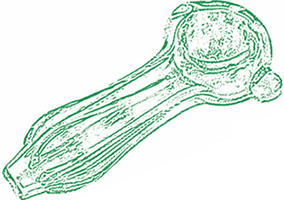
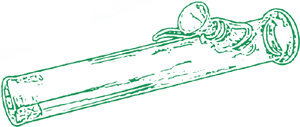
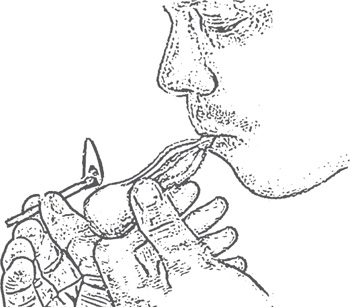
< div class='tao-gold-member'>
![]()
Stay updated, free articles. Join our Telegram channel

Full access? Get Clinical Tree


